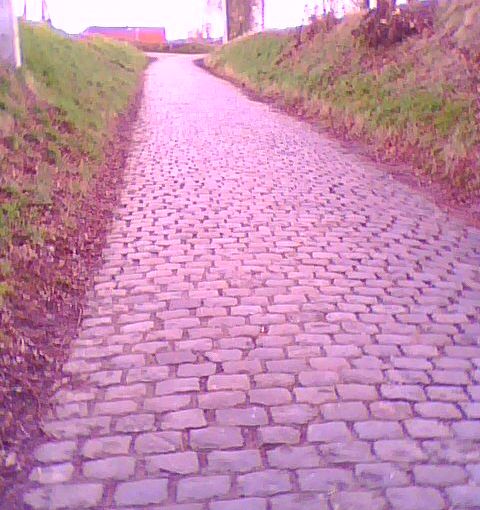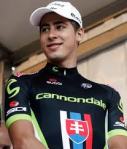Tour of Flanders & Paris Roubaix 2016
Mixed emotions. Matthew Hayman, 37 years old, erstwhile Rabobank, Sky and now Orica Green Edge domestique / road captain. Aussie transplanted to Flanders and a seemingly perennial fixture in the breakaway in the last few editions of the ‘Hell of the North’. A pro’s pro, just had another couple of years tacked onto the contract that was supposed to be his last. This year’s Paris Roubaix his first race back after an early season crash had seen him miss most of the Flandrian classics. Of all the races to come back in; the one he loves most of all. The one he has dreamed of winning, never quite believing that he could.

Tom Boonen, classics superstar. Past his best? Maybe. Many predict that this year could be his last, certainly his last chance at adding to his tally of victories in the Ronde and Roubaix. Another win in Paris Roubaix would make him the all time leader with five cobble trophies on his mantelpiece.
With those back stories you could have been happy with an outcome where either rider took the win. But then no one would have predicted a Mat Hayman victory when the race got under way last Sunday; probably not even Hayman himself.
You could have got odds of 800/1 to Matthew Hayman even after he got into the breakaway. After all, no one really expects the break to survive right? There might have been an omen in another unfancied rider getting a top ten finish in Flanders the previous weekend, but we’ll return to him later. Hayman was still attracting decent odds after he managed to survive the catch and hang with a pretty stellar group of chasers that included Boonen alongside Edvald Boasson Hagen, Sep Vanmarcke and Ian Stannard.
A rider definitely on his swansong Fabian Cancellara had been in the group behind Boonen’s alongside Peter Sagan. Over the last few years Cancellara, especially when he’s fit and on form was always a threat for the win. He had suffered with injuries last year but entering his final season he had made it clear that Flanders and Roubaix where his big targets. Denied by an inspired solo attack the week before in Belguim I anticipated Cancellara getting his own back last weekend. I didn’t see Boonen as a contender, any more so than Hayman in fact. That isn’t to say that I didn’t want to see Boonen win; I have always been in team Tom rather than in team Fabs. It was just hard to see the evidence that Boonen would have the legs to ride to the win like he did in 2012.
The possibility that Boonen might be in with a shot increased when Cancellara crashed as the race went through the final cobbled sectors on the route to Roubaix. Sagan managed to avoid the crash (that’s a photo that’s worth doing a Google image search for) and Cancellara re-mounted but neither were in a position to challenge anymore.
Even when it had got down to five riders most peoples money wouldn’t have been on Hayman but he was the only rider who was able to bridge to Boonen after his late attack. Vanmarcke had attempted to solo away on a couple of occasions over the cobbles but each time he was pegged back by one of the remaining group riding him down or the whole group combining to do so.
Perhaps Boonen thought that he would be able to outsprint Hayman when the time came in the velodrome. Vanmarcke had arrived by this point and maybe Boonen was too vary of him to pay attention the the bike length that Hayman had stole from him as the race exited the final bend. Hayman threw his arms in the air as he crossed the line. It didn’t seem like such an emphatic victory as he reacted to what he had just done after he stopped. Viewed from a more sympathetic angle it became clear that this wasn’t a win by inches.
Boonen for his part seemed philosophical in defeat, suggesting that (unlike Cancellara) he might return for the classics again next year; “Why not?” he said. The trouble is, this was (probably) his best (if not final) chance of winning Paris Roubaix for a fifth time. Since his last win he has either been injured or unable to make the key breaks in the race. Four years have inevitably taken their toll. I think the Boonen of 2012 would have finished the race the same way he did then in 2016 but this version cannot reach those heights now. Tom Boonen won’t be around in 2020 anymore than Mat Hayman and perhaps Boonen’s enigmatic smile on the Roubaix podium reflected the realisation that his best chance of winning had been snatched from him by the least likely of victors.
If Roubaix didn’t produce the perfect fairytale ending you could argue the Flanders managed it nicely. Peter Sagan had won solo the previous weekend in Gent Wevelgem and did the same in the Ronde to deny Fabian Cancellara a farewell victory. Sagan accepts that other riders won’t work with him in a way that Cancellara has never seemed to manage and he seemed equally at ease about the ‘curse’ of the rainbow jersey that so many commentators love to cite anytime any world champion cyclist fails to win in the stripes. If you believe in such things (along with unicorns I suppose), Sagan put that to bed in Gent and looked the strongest he has ever been in the Ronde.
There was a nice symmetry in both world champions winning their respective editions of the race. Lizzie Armitstead is starting to look like Marianne Vos as she seems to bend each race she rides to her will. Vos who returned to racing in a rather more low key event in her native Holland the same weekend will no doubt recapture the form that made her the rider to beat in the women’s peloton but right now Armitstead is the benchmark in women’s cycling.
Hardly surprising that two of the biggest races on the calendar could produce so many headline grabbing stories in the space of seven days. I’ll admit the one for me hasn’t gone completely unmissed but just in case I’m going to share it. Now the Ronde and Roubaix have something else in common besides cobbles. They’re both world tour races and as such if you’re a world tour team then you have to turn up. In previous seasons it has been reasonable to wonder if teams like Movistar would bother with the cobbled classics given half a chance to sack off races that don’t really translate that well to Spain. But this year something changed. Movistar got a rider in the break in Flanders. Not only that, when the break got caught the Movistar rider, Imanol Erviti stayed with the leading group and crossed the line 7th.
Fast forward a week to Roubaix and who’s in the break again? That man Erviti. Now in all the excitement about Mat Hayman Erviti’s 9th place finish is inevitably a bit less of a headline grabber. But here’s the thing. In these two monuments only one rider (Sep Vanmarcke) has delivered two top ten results. This isn’t to suggest that Movistar are suddenly going to be a force in the classics but Erviti’s rides deserve a bit more coverage than they are likely to get after a pair of particularly classic editions of the Ronde and Roubaix.
A couple of other mentions..
The new job kept me from watching Pais Vasco live but even a highlights show is enjoyable when Steve Cummings steals another win. Alberto Contador took the overall, but I just haven’t seen enough stage racing to make the call on the grand tours yet.







